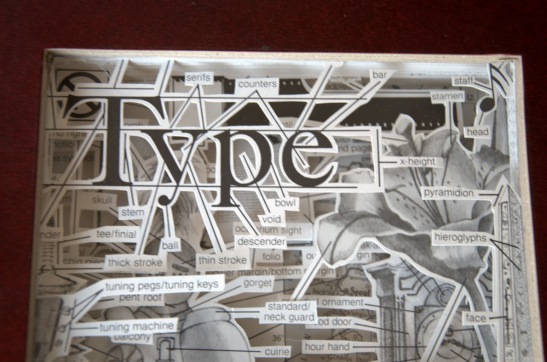
“What’s What”
All images courtesy of Julia Strand and used with permission.
Book carver Julia Strand creates beautiful artworks out of unwanted books, giving them the chance to be appreciated for a newfound artistic value, if not so much for their informational content. This is book rescue that’s definitely to our taste at 1-800-RECYCLING!
“Compton’s Pictured Encyclopedia: M(aps)”
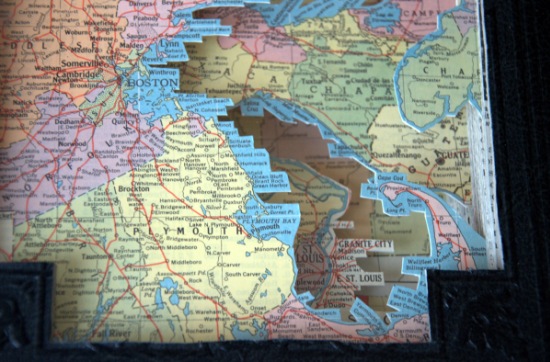
Many of the St. Louis-based artist’s creations rely on color to catch the viewer’s eye — like this map-based piece carved out of a 1955 edition of
Compton’s Pictured Encyclopedia; others, meanwhile, showcase a wonderful intricacy of detail.
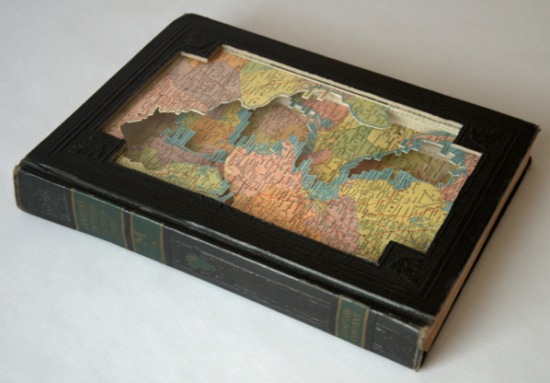
The copy of
What’s What, below, underlines the fact that illustrations don’t have to steal the show in this kind of art; text can be highly visual as well. What could better demonstrate the power of “type” to captivate our minds through its very form, not just what it signifies?
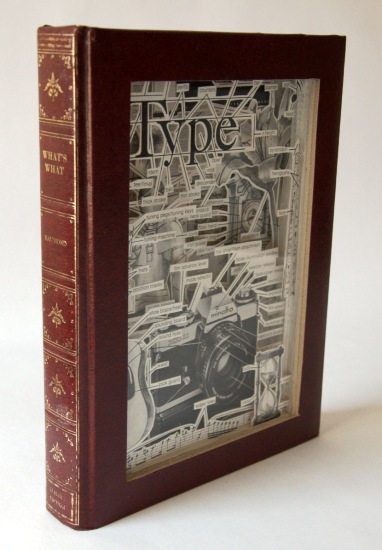
Given the razor-sharp edges of Strand’s carvings, the first question that often comes to people’s minds is: “How does she do it?” Talking about the tools of her trade, Strand says, “I use X-Acto knives, rotary cutters, tweezers, rulers, custom-cut panes of glass and lots of glue.” No lasers here, but, perhaps unsurprisingly, she does go through quite a number of X-Acto blades while executing her work.
“Advanced Watch and Clock Repair”
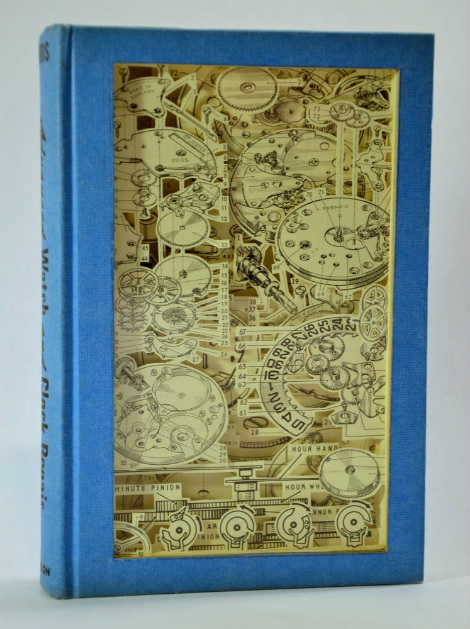
Strand carefully hollows out each book, painstakingly dissecting the pages inside while leaving a border around the edge. As she has explained: “For some books, I carve through a page at a time, removing all the text and empty space and leaving only pictures and outlines. For others, I gut the entire contents and rebuild it from scratch.”
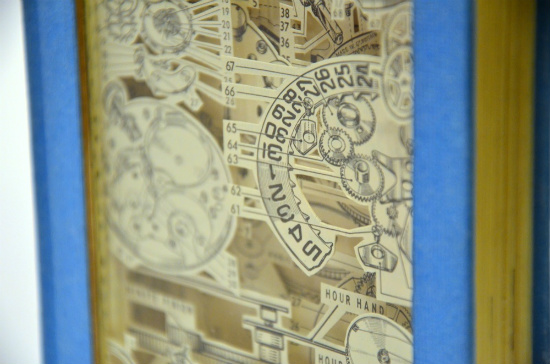
The outside cover is also cut out, leaving an empty frame that’s given a transparent cover, allowing the book’s new inner life to shine through. It takes between five and 10 hours for Strand to carve a book in this way; longer for more complicated or multi-volume projects.
“Compton’s Pictured Encyclopedia: P(aintings)”
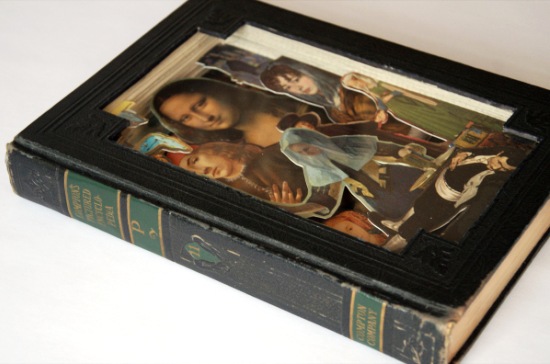
Book lovers need not worry about Strand’s apparent destruction of books; on the contrary, she gives new life to old and outdated editions. As she explains: “I love books. Because of this, I only use books that are no longer valued for their content, and never carve rare or new books. I’ve deliberately put down books (that would have made lovely carvings!) if I think someone is likely to appreciate them intact.”
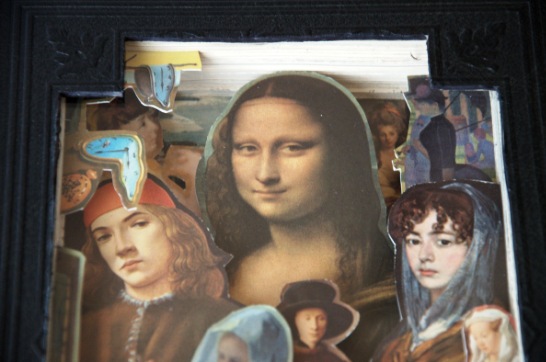
She finds the “raw materials” that are her reference books (usually several editions out of date) at garage sales and secondhand stores, or gets them as donations from friends and at giveaways. Thus, what might have ultimately been lost or simply gathering dust is given another shot as an art object.
“Field Guide Triptych”
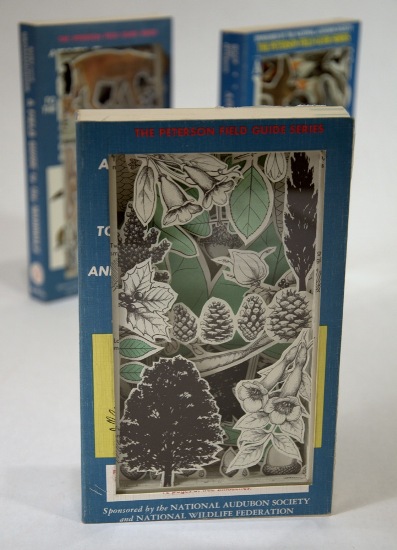
Recalling the Eureka moment she experienced after the first few book carvings, Strand named her blog “Hokey Stokes!”, which is a “phrase used to express wonderment or surprise in situations when ‘Holy Buckets!’ is deemed too explicit or crude.” In Missouri, we’re assuming!

Sometimes, Strand gets inspired by a whole series of books, as with this Peterson
Field Guide triptych. She lovingly carved out the most beautiful illustrations from
A Field Guide to the Birds,
Trees and Shrubs and
Mammals and beautifully assembled them for the series.
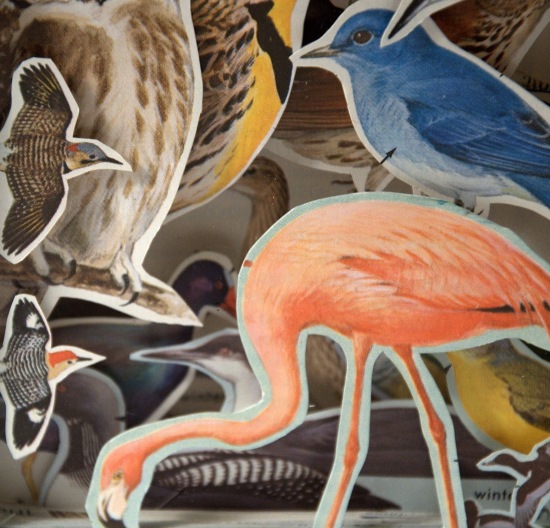
Strand’s book-carving career (still a part-time one) started a few years ago when she found a set of
Funk & Wagnalls Encyclopedias awaiting free collection outside a used bookstore. She recalls: “I didn’t know what I’d do with them, but thought it was a pity that such a lovely set of books could end up in a dirty cardboard box in a parking lot, so I brought them home.” In retrospect, what an excellent idea!
“Gray’s Anatomy”

Even famous books are not spared from Strand’s X-Acto blade — like the volume of
Gray’s Anatomy, seen here. You don’t have to be a medical student to easily discern that this is an old edition.
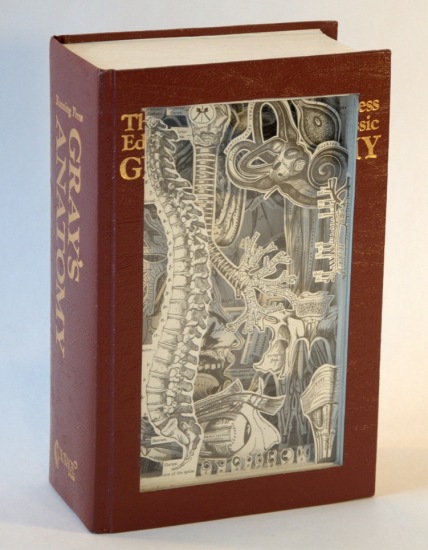
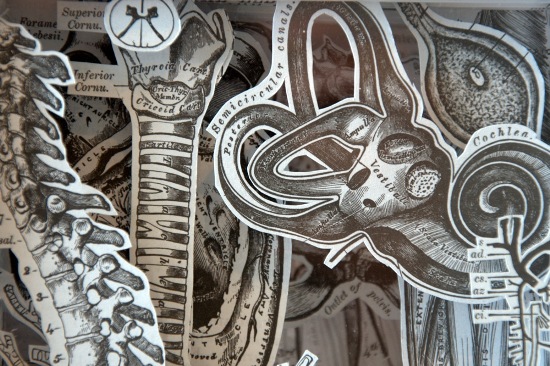
The beauty of this piece is that whichever way you look at it you can see the intricate carvings, as it’s double sided: both covers act as frames because it’s been hollowed out from both sides. More appealing than the original? The person in possession seems to think so, proclaiming: “As the proud owner of this object, both before and after its conversion into art, I can definitely say that it gives me 10 times more joy afterward!”
“The Way Things Work”
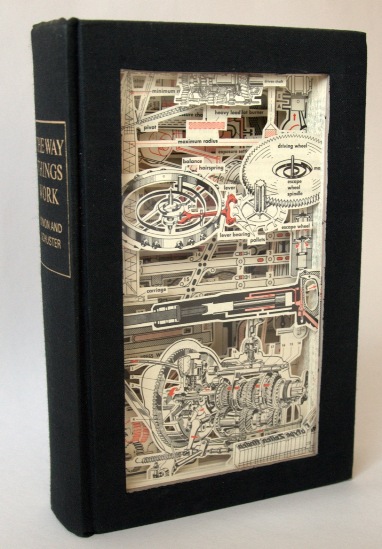
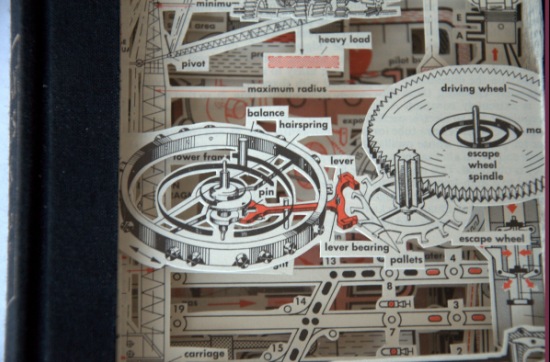
Those who fondly remember their copy of the famous
The Way Things Work will like this less-glossy earlier version, as well — especially the way it has been given a new lease of life by Strand’s almost surgical touch.
“Webster’s Third New International Dictionary”
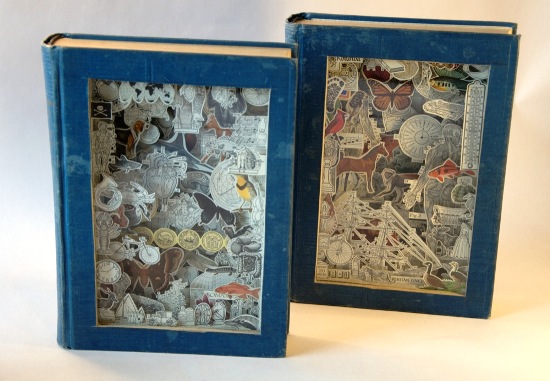
We asked Strand what, for her, is the most difficult aspect of book carving. Her response: “I think the most challenging part is emotional — if I put a lot of work into a book and then accidentally gouge something while trying to cut something else, it can be frustrating. Mostly it is just fun and relaxing, which is why I do it!”
“North American Wildlife”
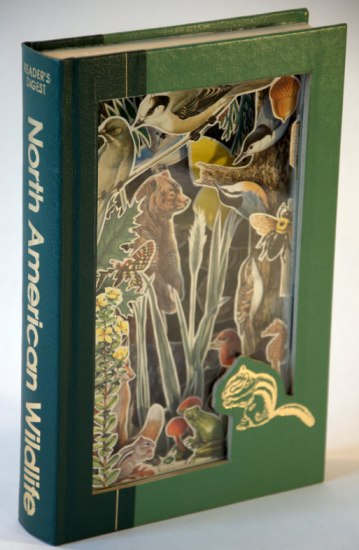
Part of the charm of Strand’s creations lies in the meticulous attention she pays to detail. Just look at the squirrel imprinted on this cover of
North American Wildlife that she carefully incorporated into the book carving. Amazing!
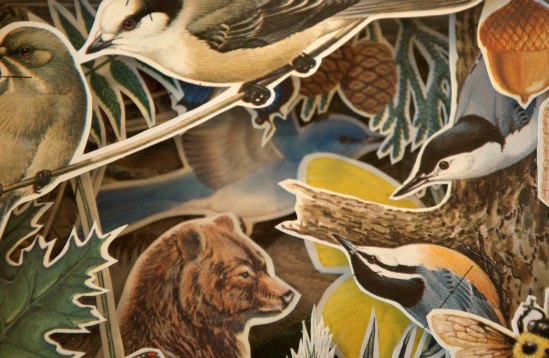
Strand has even been compared to master book carver Brian Dettmer who, among others, has definitely inspired her work. And for those who’d like to try their hand at carving their own outdated books (as we hope you will), this self-taught book carver recommends searching the Internet for further inspiration (Strand suggests the work of Noriko Ambe, Alexander Korzer-Robinson and Bronia Sawyer to name just a few) and instructions. It’s all in the research!
“Jane Brody’s Good Food Book”
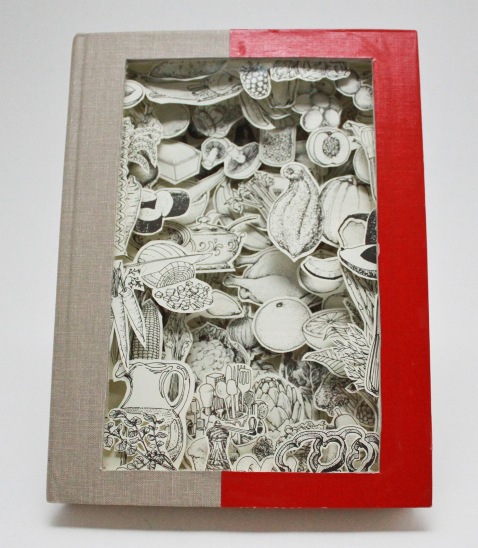
Foodies will surely love this interpretation of
Jane Brody’s Good Food Book. All kinds of fruits and other food staples vie for our attention, and the way they are layered is really something. It sure looks like a mouthwatering display to us!

So just how relevant is book repurposing? Considering the fact that there are around 129 million books out there in the world today (Google Books did a very careful count in 2010) and that books unfortunately go out of date faster and faster, the answer should be a resounding “very relevant!” In the U.S. alone, about 175,000 new titles are published every year (that’s about 20 books every hour!) and so the stack of outdated editions is growing steadily. What, then, to do with them all?
“Webster’s New World Dictionary of the American Language”
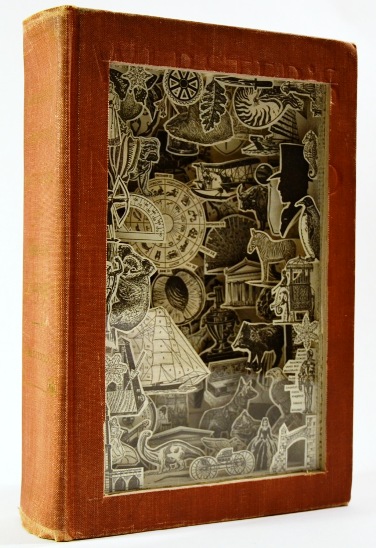
Many publishers prefer to junk their old book stock rather than give them away for fear of books being sold on the black market, thus cutting into the sale of new editions and other books. However, there are companies out there that specialize in the complete destruction of old books — although “destruction” in this case actually means that the old volumes are 100% recycled and used to make new paper. We found one Ohio-based company that claims to destroy 90 tons of unwanted books every day!
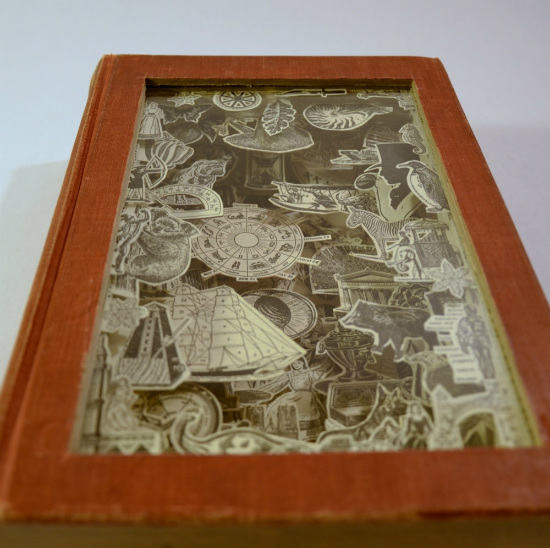
That, of course, would be a lot of books to carve into beautiful artistic creations. But, unless we rethink the way we treat old books, it falls on such recycling initiatives to help stop useful paper waste filling up landfills. Recycling like this — or armies of artists like Julia Strand!
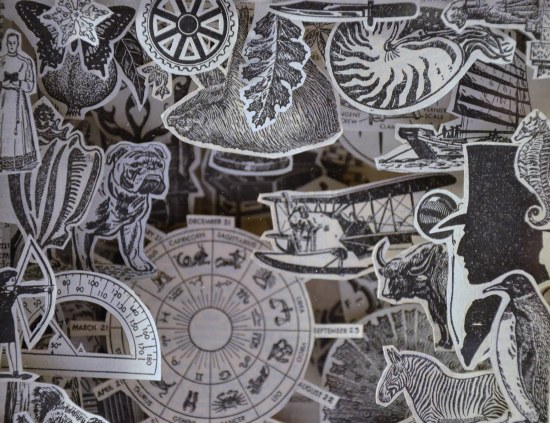
Strand’s work is truly thought provoking, as by apparently destroying old books, she actually places more emphasis on their life cycle as objects. Do we really need to throw away old editions of books? Aren’t there plenty of uses we can still get out of them — directly or indirectly — even if their content is outdated?
“A Dictionary for Boys and Girls (Webster’s Elementary Dictionary)”
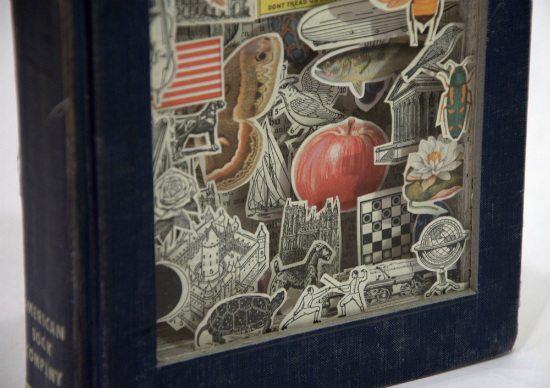
Books are multifaceted. Where their less tangible value as sources of information ends, their physical qualities step in. Naturally, they are a repository of text, images and illustrations, but they also supply the raw material for many art and craft projects and can also be reborn as paper, once again ready to serve other practical purposes.
“Compton’s Pictured Encyclopedia: B(utterflies)”
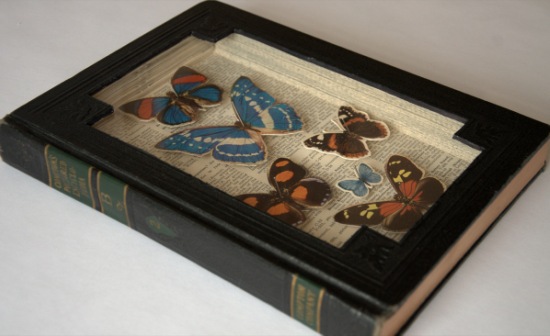
Strand is a scientist by training and holds a Ph.D. in Cognitive Psychology from Washington University in St. Louis. She has just started a faculty position at Carleton College in Minnesota, where she will continue her research on how the human brain processes speech and language. She relaxes by carving books into intricate pieces of art in her spare time, and her art has been featured widely on the Internet.
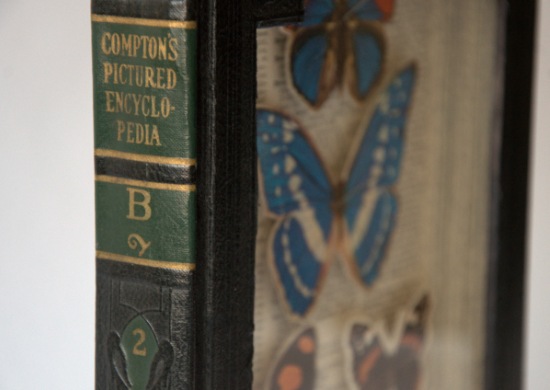
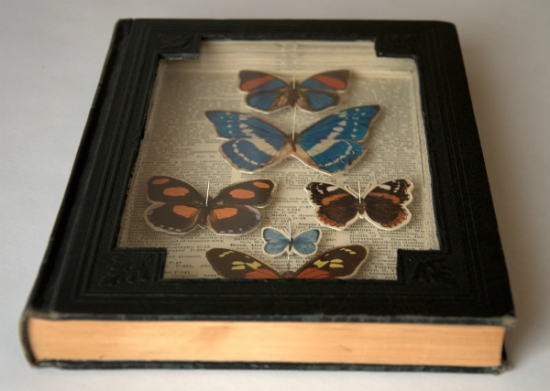
All of Strand’s creations are for sale through her
Etsy shop, with prices ranging from between $225 and $300, depending on the type of work. But hurry, they’re selling like proverbial hotcakes! Alternatively, you can commission the artist to create a piece using one of your own old books via her
Hokey Stokes blog.
Sources: 1, 2, 3, 4, 5, 6



























